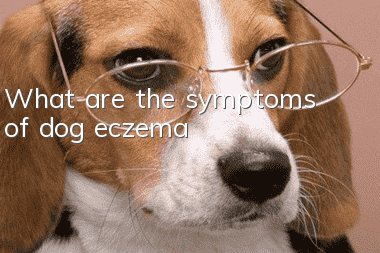Pet owners need to know these vaccine basics

Nowadays, pets have become an important part of many families, and many people are preparing to raise pets. Regarding raising pets, these basic knowledge of pet vaccines need to be understood first!
1. The two-combination vaccine (imported) for puppies prevents canine distemper and canine parvovirus disease. It should be used within 4-6 weeks.
2. Canine pentavalent vaccine (imported) prevents canine distemper, canine parvovirus, canine infectious hepatitis, canine parainfluenza, and canine adenovirus type 2.
3. Canine six-link vaccine (imported) prevents canine distemper, canine parvovirus, canine infectious hepatitis, canine parainfluenza, canine adenovirus type 2 and canine leptospirosis.
4. Usage of five-in-one vaccine and six-in-one vaccine: ① Puppies aged 50 days to three months old should be injected three times in a row, with an interval of 3 to 4 weeks between each time. ②Adult dogs over three months old should be injected twice consecutively with an interval of 3 to 4 weeks, and then injected once a year. Note: This vaccine does not contain rabies vaccine, and a separate rabies vaccine is required.
5. Rabies vaccine. This vaccine is used to prevent rabies for healthy dogs and other animals. Puppies over three months old should be injected once. Our country stipulates that the vaccination period is one year, and then injected once a year. At present, the dog vaccines commonly used in domestic pet veterinary clinics are divided into two types: domestic and imported vaccines.
(1) Domestic vaccines. They are mainly trial-produced by different scientific research units, including canine triple vaccine and canine pentavalent vaccine. Among these products, the canine pentavalent vaccine developed by military veterinarians at Changchun Veterinary University has better quality and is widely used in towns, small and medium-sized cities.
(2) Imported vaccines. Most of them are canine six-linked vaccines, which can prevent six kinds of acute infectious diseases in dogs, including canine distemper, canine parvovirus, canine leptospirosis, infectious hepatitis, infectious bronchitis and parainfluenza. Generally, puppies aged 50 days to 3 months old are vaccinated for the first time, and they are vaccinated once every 21 days, subcutaneously, for 3 consecutive times. From now on, once a year. Puppies over 3 months old when vaccinated for the first time (including adult dogs that have not been vaccinated are vaccinated twice in the first year, with an interval of 21 days between each time.) After that, once a year. At present, the imported canine vaccine has good quality and high protection rate, and is widely used in big cities. Commonly used: the Solvay vaccine of the American company Ford, Vic vaccine of the French company Vac, the American Gaosheng vaccine, the Dutch Intervet vaccine, etc.
Vaccination against rabies is an obligation for dog owners, and is also stipulated in dog-raising regulations. It is a responsible matter for both humans and dogs to prevent rabies, and vaccination must be carried out. At present, there is no vaccine that can be administered every two or three years in China. In clinical practice, it is occasionally seen that some foreign companies or foreign businessmen bring this vaccine into the country to inject their own dogs. If the above vaccines are only given for one year, they will not provide lifelong immunity.
- What should you pay attention to when breeding dogs?
- Dog parvovirus treatments and methods
- How to tell if your dog is pregnant?
- How to treat diarrhea in Beagle dogs?
- What are the personality traits of the Bernese Mountain Dog?
- How to tell if your dog is going to have a difficult birth? What do you need to prepare before delivering your dog?
- Which pet is more clingy? Do you know the top ten clingy pets?
- The dog grunts like a pig
- What to do if your dog vomits yellow water with foam
- Teach you how to train a Samoyed dog? Samoyed training method!



